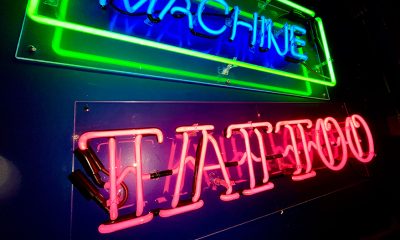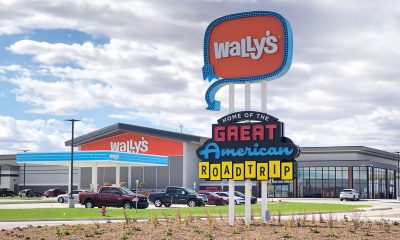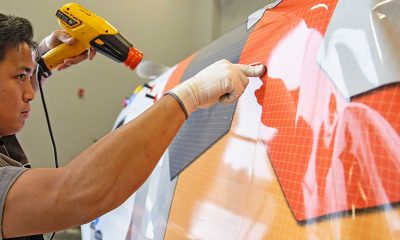WITH TOOLKIT IN hand, I enter a very busy body shop. Everywhere are wrecked vehicles in various states of disrepair. I hear a loud voice bellowing over the grinders, polishers and other OSHA noise violations, “Hey! It’s the pros from Dover.” It is only me he is addressing, but the line from the 1970 movie M*A*S*H doesn’t waste its meaning on this seasoned sign pro. I give the guy a wave and immediately play the role.
Amid all the skill levels amassed in this building, I show up with paint-slopped clothes and color charts, summoned by speed dial to do a job outside of their wheelhouse: a late ’90s conversion van wrecked on the driver’s side. Fenders, sides and glass all replaced, and the base coat of paint fresh and matching the passenger side.
Conversion vans were the rage in the ’80s and ’90s. They were painted, striped and converted by the wild imaginations of their designers. To reproduce an original is a challenge. Most of the replacement graphics are obsolete and can’t be found in the catalogs with the fenders, bumpers and whatever else.
The first of the two trips to the body shop is for documenting the non-damaged side. Between two- or three-color charts, hopefully I can match the theme with vinyl scraps and striping from my shop. I have a cabinet full of remnants from 150-ft. rolls of pinstriping, ranging from ⅛ in. through ¼ in. to ½ in. and thicker. And if I don’t have the colors, they are only a couple days away from my striping supplier. I reproduce the bigger graphics from larger scraps, and occasionally have to order a 10-yd. roll when I don’t have a particular, oddball color.
Job day arrives. I’m set with all the tools, colors, rolls of masking, folding table, straight edge and trusted #11 tip X-Acto blades, and ready to hear it again: “It’s the pros from Dover.” Instantly, I take on that persona and set up my work area. Allow space from one side of the van to the other for the 200 trips back and forth. With accurate measurements from the good side, the striping is easy.
For the graphics and shapes, masking is rolled over to what I’m reproducing. With the side of a #2 pencil, I do a rubbing on the masking, peel it off and apply to the paper side/release liner of the vinyl — giving me the reverse image. Hand cut, mask the vinyl side, position on the van, remove the release liner, roll or squeegee to the surface, remove the mask and the results should look like the original from that wild designer in the ’80s or ’90s. If not, I always tell the shop manager, “You will not see both sides of the van at the same time unless you are in one hell of a wreck.”
Advertisement
Once you master this technique, reproducing other graphics in the field can save you a trip to your shop, or in my case, ordering from my graphics cutter. One body shop has me coming in regularly to do the “4 x 4” graphics you see so often on the back panels of pickup trucks. You can do this at a tenth of the cost of their OEM replacement catalog.
Even though Dover is 325 miles away, I proudly accept the shoutout from the crew that I become part of for a day or two. And then it’s back to the signshop (with no sign).

 Tip Sheet1 week ago
Tip Sheet1 week ago
 Photo Gallery3 days ago
Photo Gallery3 days ago
 Ask Signs of the Times5 days ago
Ask Signs of the Times5 days ago
 Real Deal2 weeks ago
Real Deal2 weeks ago
 Benchmarks1 week ago
Benchmarks1 week ago
 Paula Fargo12 hours ago
Paula Fargo12 hours ago
 Photo Gallery13 hours ago
Photo Gallery13 hours ago
 Women in Signs2 weeks ago
Women in Signs2 weeks ago












